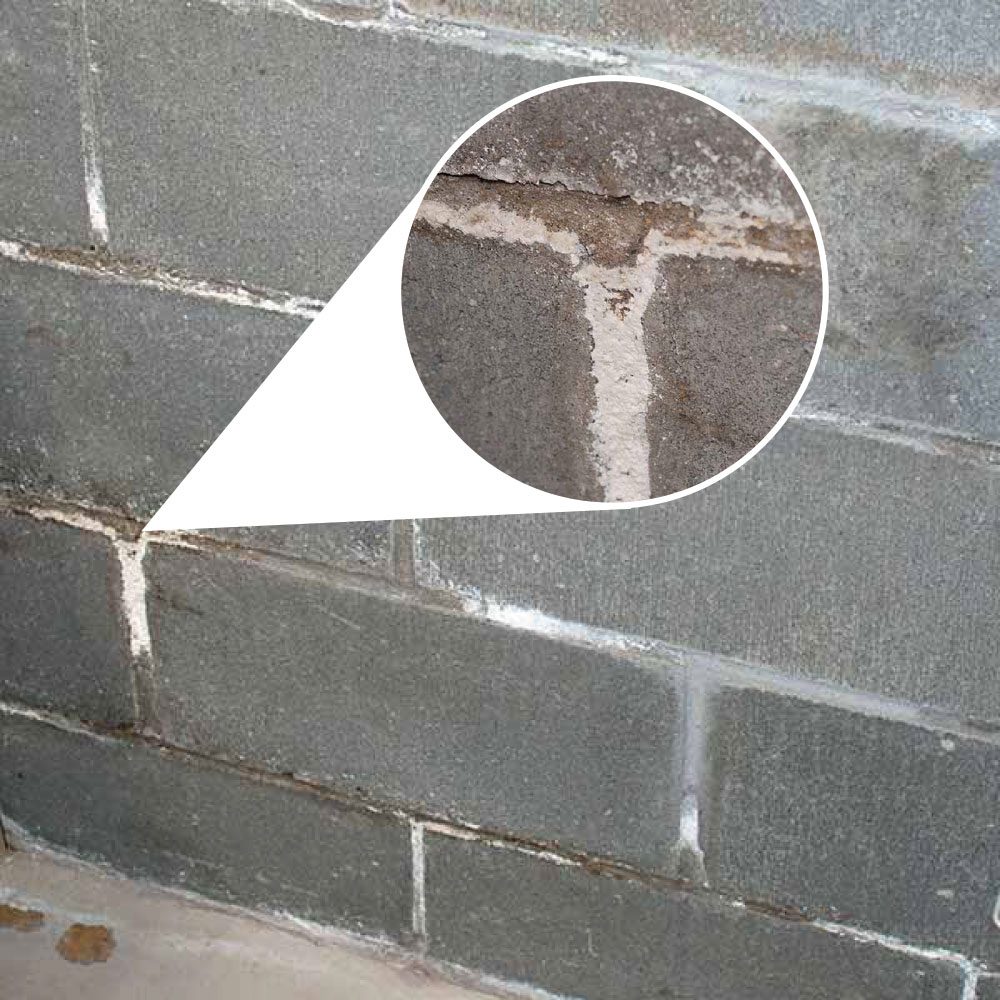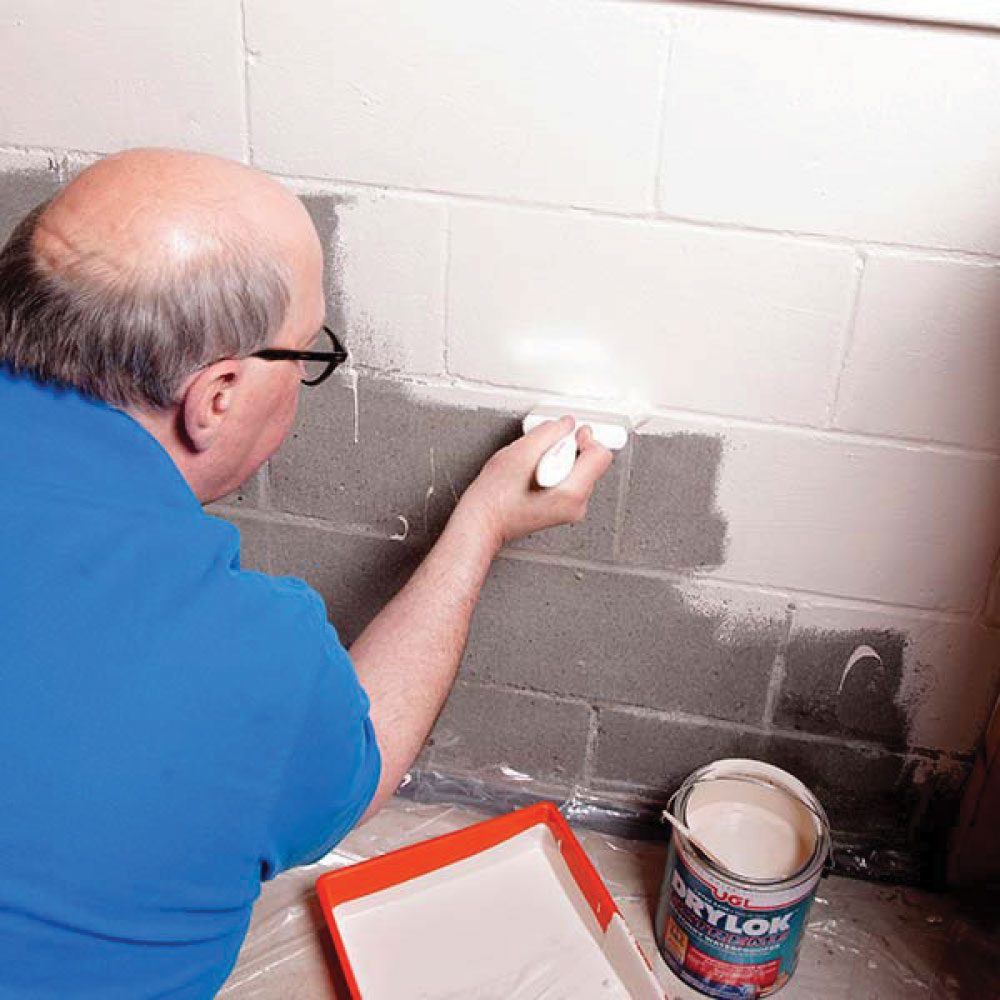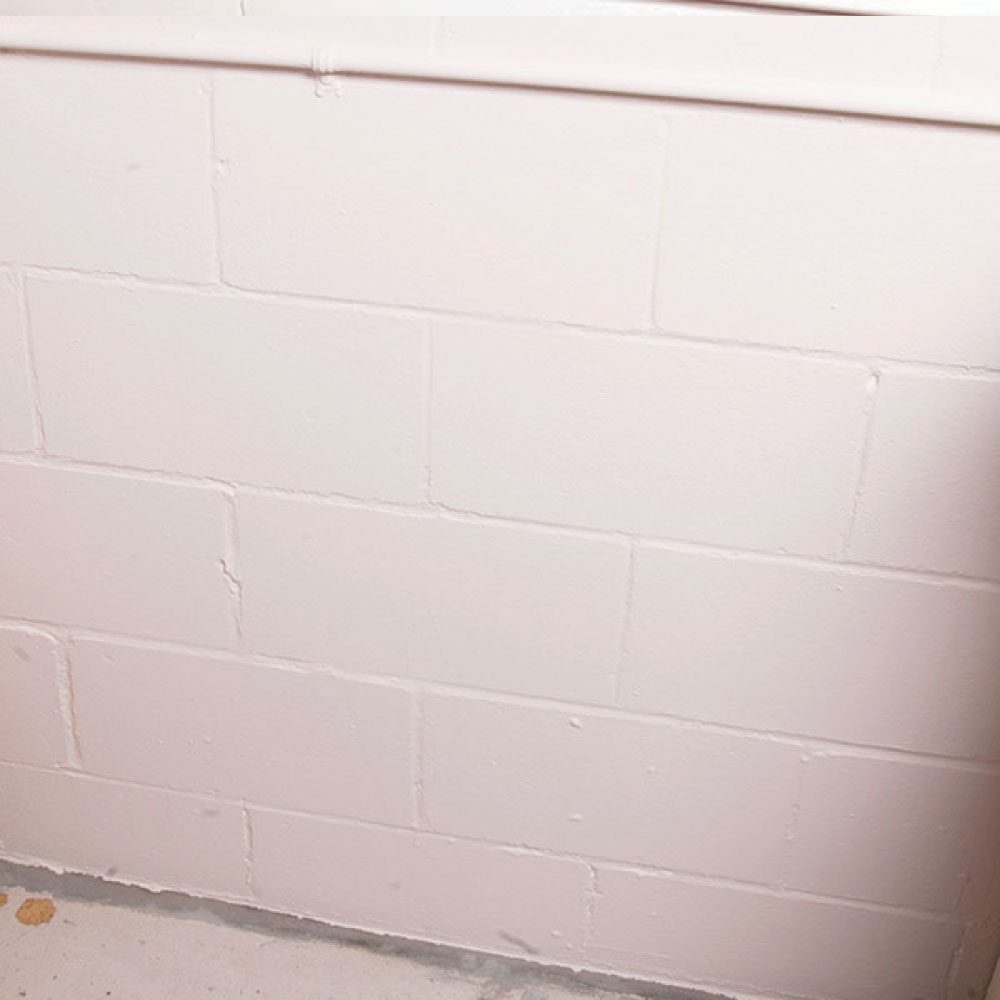Waterproofing Products Help Keep Basements Dry
Updated: Jun. 28, 2017
A little inspection and finishing work will go a long way in keeping your basement dry.
Sponsored by DRYLOK
My house is a split-entry design with the lower level one-half below grade. So the lower-level walls are concrete block from the foundation up to the stud walls. I’ve always had a slight moisture problem on the below-grade walls in my workshop. Stopping the moisture is especially important in that room because the moisture rusts my tools.
In the spring, the moisture shows up as damp spots on the block wall and occasional wet spots on the floor where it meets the block wall. As summer approaches and the wall dries out, I see patches of efflorescence on the blocks. Last year I regraded the garden and that helped a bit, but I still saw some damp spots this spring. That’s when I decided to do something about it.

For this story, I partnered with UNITED GILSONITE LABORATORIES, which supplied its DRYLOK Masonry Waterproofer, DRYLOK Fast Plug hydraulic cement and DRYLOK Brush products. DRYLOK is a latex-based waterproofing paint that’s perfect for my below-grade concrete block wall. My goal was to prep and paint the area in my workshop and see if it made a difference. Here’s what I did.
I Prepped the Surface
The instructions recommended removing all traces of efflorescence before applying the product. Efflorescence is a white powdery deposit of surface salt that leeches out of the concrete due to water infiltration. I purchased a bottle of DRYLOK ETCH and diluted it according to the instructions. I wore rubber gloves and eye protection and applied it to the blocks with a stiff brush. Then I rinsed the surface with clean water.

Next, I checked for holes and cracks in the blocks and along the area where the blocks meet the floor. I found a small gap where the floor meets the wall. I mixed the DRYLOK Fast Plug product and loaded it into a sandwich bag. Then I clipped the corner of the bag and squeezed it to force the cement into the crack. Then I smoothed it over with my finger and let it cure for 24 hours.
Then I applied DRYLOK Waterproofer
Because block is porous, it’s really important to use a stiff nylon bristle brush or a 3/4-in.-nap roller to force the product into the pores. I was working with a small section, so I used the brush for the first coat and the roller for the second coat, allowing the product to dry between coats.

After the second coat dried, I inspected the wall for pinholes and filled them using the brush. If you find lots of missed holes, that’s a sign you’re stretching the product too far or spreading it too fast. Filling the pores is critical to stopping water penetration, so apply a liberal third coat, making sure you force it into the pores.

Rain is in the Forecast
The DRYLOK Masonry Waterproofer product is known for stopping water penetration. There’s rain in the forecast, and I’ll let you know how it works.
– Rick Muscoplat, Contributing Editor
This is a sponsored conversation written by me on behalf of UGL. The opinions and text are all mine.